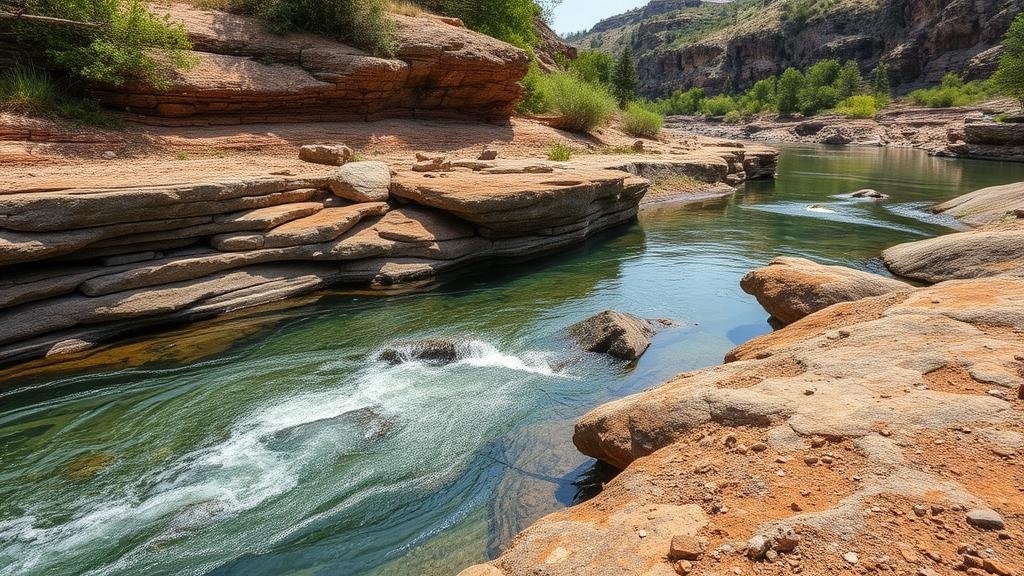Exploring Ancient River Courses for Fossilized Aquatic Life
Exploring Ancient River Courses for Fossilized Aquatic Life
The study of ancient river courses and their fossilized aquatic life is a critical area of research within paleontology and geology. Understanding these river systems provides insights into the biodiversity of past ecosystems, climatic conditions, and the geological processes that shaped Earths surface. This article explores significant findings, methodologies, and implications of exploring ancient river courses for fossilized aquatic life.
Introduction to Ancient River Systems
Ancient rivers have long been recognized as vital components of terrestrial ecosystems, providing habitats for diverse species. e systems frequently changed course over geological time, influenced by tectonic shifts, climate variations, and sediment deposition. River courses can preserve a range of fossilized remains, representing organisms from different epochs.
Historical Context
Research into ancient river systems dates back to the early 19th century, with pioneering contributions from geologists such as Charles Lyell and William Smith. In the late 1800s, studies in areas like the western United States revealed extensive fossil beds associated with ancient fluvial systems. For example, the Green River Formation in Wyoming, Utah, and Colorado, dated primarily to the Eocene Epoch (56 to 33.9 million years ago), is renowned for its well-preserved fossilized aquatic life.
Methodologies for Identifying Ancient River Courses
Determining the extent and characteristics of ancient river courses involves various multidisciplinary approaches:
- Geological Mapping: Analyzing sedimentary rock layers, stratigraphy, and geomorphology helps reconstruct river pathways.
- Radiometric Dating: Techniques such as carbon dating and uranium-series dating provide ages for sediment layers, helping to understand the temporal aspect of river evolution.
- Paleobotanical Studies: Fossilized plant remains grant insights into the climate and ecological conditions of ancient river environments.
Findings from Recent Studies
Recent explorations have revealed significant findings regarding ancient freshwater ecosystems. For example, the discovery of diverse fish, amphibians, and invertebrates within the Green River Formation illuminates the ecological dynamics of Eocene rivers. Researchers identified at least 10 genera of fish, including the Ray-finned fish (Actinopterygii), contributing to our understanding of aquatic life diversity during this period.
Another compelling case study involves the Late Cretaceous paleo-rivers in Mongolia, where fossilized remains of the prehistoric crocodilian, Deinosuchus, were unearthed. e findings shed light on predator-prey relationships in ancient aquatic ecosystems and provide evidence of climatic conditions conducive to the survival of these large taxa.
Implications for Current Ecological Studies
Studying ancient river courses offers valuable insights applicable to contemporary ecological studies. By understanding how ancient ecosystems responded to climate change, researchers can better predict the potential impacts of current ecological shifts, especially in light of increasing global temperatures. For example, the resilience of certain aquatic life forms during past mass extinctions provides a basis for assessing which species may withstand future environmental changes.
Challenges and Limitations
Despite the advancements in research methodologies, challenges remain in the study of ancient river systems:
- Access to Sites: Many fossil sites are located in remote or protected areas, limiting research opportunities.
- Preservation Bias: Fossilization is a rare occurrence, leading to gaps in the fossil record, which may skew our understanding of past ecosystems.
Conclusion
Exploring ancient river courses for fossilized aquatic life provides essential knowledge about Earth’s historical biodiversity and informs us about the ecological thresholds that may be relevant today. As technologies improve and methodologies expand, the understanding of these ancient systems will continue to evolve, potentially guiding conservation strategies in current aquatic ecosystems.
Actionable Takeaways
- Engage in interdisciplinary studies to enhance understanding of ancient environments.
- Use modern dating techniques and geological mapping for accurate reconstructions.
- Consider the implications of ancient ecosystems on contemporary ecological research and conservation efforts.



